Want to catch up with other articles from this series?
- The straight dope on cholesterol – Part I
- The straight dope on cholesterol – Part II
- The straight dope on cholesterol – Part III
- The straight dope on cholesterol – Part IV
- The straight dope on cholesterol – Part V
- The straight dope on cholesterol – Part VI
- The straight dope on cholesterol – Part VII
- The straight dope on cholesterol – Part VIII
- The straight dope on cholesterol – Part IX
Previously, across 8 parts of this series we’ve laid the groundwork to ask perhaps the most important question of all:
What should you eat to have the greatest chance of delaying the arrival of cardiovascular disease?
Before we get there, since this series has been longer and more detailed than any of us may have wanted, it is probably worth reviewing the summary points from the previous posts in this series (or you can just skip this and jump to the meat of this post).
What we’ve learned so far
- Cholesterol is “just” another fancy organic molecule in our body but with an interesting distinction: we eat it, we make it, we store it, and we excrete it – all in different amounts.
- The pool of cholesterol in our body is essential for life. No cholesterol = no life.
- Cholesterol exists in 2 forms – unesterified or “free” (UC) and esterified (CE) – and the form determines if we can absorb it or not, or store it or not (among other things).
- Much of the cholesterol we eat is in the form of CE. It is not absorbed and is excreted by our gut (i.e., leaves our body in stool). The reason this occurs is that CE not only has to be de-esterified, but it competes for absorption with the vastly larger amounts of UC supplied by the biliary route.
- Re-absorption of the cholesterol we synthesize in our body (i.e., endogenous produced cholesterol) is the dominant source of the cholesterol in our body. That is, most of the cholesterol in our body was made by our body.
- The process of regulating cholesterol is very complex and multifaceted with multiple layers of control. I’ve only touched on the absorption side, but the synthesis side is also complex and highly regulated. You will discover that synthesis and absorption are very interrelated.
- Eating cholesterol has very little impact on the cholesterol levels in your body. This is a fact, not my opinion. Anyone who tells you different is, at best, ignorant of this topic. At worst, they are a deliberate charlatan. Years ago the Canadian Guidelines removed the limitation of dietary cholesterol. The rest of the world, especially the United States, needs to catch up. To see an important reference on this topic, please look here.
- Cholesterol and triglycerides are not soluble in plasma (i.e., they can’t dissolve in water) and are therefore said to be hydrophobic.
- To be carried anywhere in our body, say from your liver to your coronary artery, they need to be carried by a special protein-wrapped transport vessel called a lipoprotein.
- As these “ships” called lipoproteins leave the liver they undergo a process of maturation where they shed much of their triglyceride “cargo” in the form of free fatty acid, and doing so makes them smaller and richer in cholesterol.
- Special proteins, apoproteins, play an important role in moving lipoproteins around the body and facilitating their interactions with other cells. The most important of these are the apoB class, residing on VLDL, IDL, and LDL particles, and the apoA-I class, residing for the most part on the HDL particles.
- Cholesterol transport in plasma occurs in both directions, from the liver and small intestine towards the periphery and back to the liver and small intestine (the “gut”).
- The major function of the apoB-containing particles is to traffic energy (triglycerides) to muscles and phospholipids to all cells. Their cholesterol is trafficked back to the liver. The apoA-I containing particles traffic cholesterol to steroidogenic tissues, adipocytes (a storage organ for cholesterol ester) and ultimately back to the liver, gut, or steroidogenic tissue.
- All lipoproteins are part of the human lipid transportation system and work harmoniously together to efficiently traffic lipids. As you are probably starting to appreciate, the trafficking pattern is highly complex and the lipoproteins constantly exchange their core and surface lipids.
- The measurement of cholesterol has undergone a dramatic evolution over the past 70 years with technology at the heart of the advance.
- Currently, most people in the United States (and the world for that matter) undergo a “standard” lipid panel, which only directly measures TC, TG, and HDL-C. LDL-C is measured or most often estimated.
- More advanced cholesterol measuring tests do exist to directly measure LDL-C (though none are standardized), along with the cholesterol content of other lipoproteins (e.g., VLDL, IDL) or lipoprotein subparticles.
- The most frequently used and guideline-recommended test that can count the number of LDL particles is either apolipoprotein B or LDL-P NMR, which is part of the NMR LipoProfile. NMR can also measure the size of LDL and other lipoprotein particles, which is valuable for predicting insulin resistance in drug naïve patients, before changes are noted in glucose or insulin levels.
- The progression from a completely normal artery to a “clogged” or atherosclerotic one follows a very clear path: an apoB containing particle gets past the endothelial layer into the subendothelial space, the particle and its cholesterol content is retained, immune cells arrive, an inflammatory response ensues “fixing” the apoB containing particles in place AND making more space for more of them.
- While inflammation plays a key role in this process, it’s the penetration of the endothelium and retention within the endothelium that drive the process.
- The most common apoB containing lipoprotein in this process is certainly the LDL particle. However, Lp(a) and apoB containing lipoproteins play a role also, especially in the insulin resistant person.
- If you want to stop atherosclerosis, you must lower the LDL particle number. Period.
- At first glance it would seem that patients with smaller LDL particles are at greater risk for atherosclerosis than patients with large LDL particles, all things equal.
- “A particle is a particle is a particle.” If you don’t know the number, you don’t know the risk.
- With respect to laboratory medicine, two markers that have a high correlation with a given outcome are concordant – they equally predict the same outcome. However, when the two tests do not correlate with each other they are said to be discordant.
- LDL-P (or apoB) is the best predictor of adverse cardiac events, which has been documented repeatedly in every major cardiovascular risk study.
- LDL-C is only a good predictor of adverse cardiac events when it is concordant with LDL-P; otherwise it is a poor predictor of risk.
- There is no way of determining which individual patient may have discordant LDL-C and LDL-P without measuring both markers.
- Discordance between LDL-C and LDL-P is even greater in populations with metabolic syndrome, including patients with diabetes. Given the ubiquity of these conditions in the U.S. population, and the special risk such patients carry for cardiovascular disease, it is difficult to justify use of LDL-C, HDL-C, and TG alone for risk stratification in all but the most select patients.
- To address this question, however, one must look at changes in cardiovascular events or direct markers of atherosclerosis (e.g., IMT) while holding LDL-P constant and then again holding LDL size constant. Only when you do this can you see that the relationship between size and event vanishes. The only thing that matters is the number of LDL particles – large, small, or mixed.
- HDL-C and HDL-P are not measuring the same thing, just as LDL-C and LDL-P are not.
- Secondary to the total HDL-P, all things equal it seems smaller HDL particles are more protective than large ones.
- As HDL-C levels rise, most often it is driven by a disproportionate rise in HDL size, not HDL-P.
- In the trials which were designed to prove that a drug that raised HDL-C would provide a reduction in cardiovascular events, no benefit occurred: estrogen studies (HERS, WHI), fibrate studies (FIELD, ACCORD), niacin studies, and CETP inhibition studies (dalcetrapib and torcetrapib). But, this says nothing of what happens when you raise HDL-P.
- Don’t believe the hype: HDL is important, and more HDL particles are better than few. But, raising HDL-C with a drug isn’t going to fix the problem. Making this even more complex is that HDL functionality is likely as important, or even more important, than HDL-P, but no such tests exist to “measure” this.
Did you say “delay?”
That’s right. The question posed above did not ask how one could “prevent” or eliminate the risk cardiovascular disease, it asked how one could “delay” it. There is a difference. To appreciate this distinction, it’s worth reading this recent publication by Allan Sniderman and colleagues. Allan sent me a copy of this paper ahead of publication a few months ago in response to a question I had posed to him over lunch one day. I asked,
“Allan, who has a greater 5-year risk for cardiovascular disease, a 25 year-old with a LDL-P/apoB in the 99th percentile or a 75-year-old with a LDL-P/apoB in the 5th percentile?”
The paper Allan wrote is noteworthy for at least 2 reasons:
- It’s an excellent reminder that age is a paramount risk factor for cardiovascular disease.
- It provides a much better (causal) model for atherosclerosis than the typical age-driven models, and explains why age is an important risk factor.
What do I mean by this? Most risk calculators (e.g., Framingham) take their inputs (e.g., age, gender, LDL-C, HDL-C, smoking, diabetes, blood pressure) and calculate a 10-year risk score. If you’ve ever played with these models you’ll quickly see that age drives risk more than any other input. But why? Is there something inherently “risky” about being older?
Sniderman and many others would argue (and I agree) that the reason age is a strong predictor of risk has to do with exposure to apoB particles — LDL, Lp(a), and apoB-carrying remnants. Maybe it’s because I’m a math geek, but such models just seem intuitive to me because I think of most things in life in terms of calculus, especially integrals, the “area under a curve.”
[I once tried to explain to a girlfriend who thought I wasn’t spending enough time with her that my interest in her should be thought of in terms of the area under the curve, rather than any single point in time. That is, think in terms of the integral function, not the point-in-time function. Needless to say, she broke up with me on the spot (in the middle of a parking lot!), despite me drawing a very cool picture illustrating the difference, which I’ve re-created, below.]
The reason age is such a big driver of risk is that the longer your artery walls are exposed to the insult of apoB particles, the more likely they are to be damaged, for all the reasons we covered in Part IV of this series. [This paper also reviews the clinical situation of PCSK9 mutations which builds a very compelling case for the causal model of apoB particles in the development of atherosclerosis].
What does eating have to do with cardiovascular risk?
So now that everyone is on the edge of their seat in anticipation of this punch-line, let me provide two important caveats.
First, there are no long-term studies – either in primary or secondary prevention – examining the exact question we all want to know the answer to with respect to the role of dietary intervention on cardiovascular disease. There are short-term studies, some of which I will highlight, which look at proxies for cardiovascular disease, but all of the long-term studies (looking at secondary prevention), are either drug studies or multiple intervention studies (e.g., cholesterol-lowering drug(s) + blood pressure reducing drug(s) + dietary intervention + exercise + …).
In other words, the “dream” study has not been done and won’t be done for a long time. The “dream” study would follow 2 randomized groups for many years and only make one change between the groups. Group 1 would consume a standard American diet and group 2 would consume a very-low carbohydrate diet. Furthermore, compliance within each group would be excellent (many ways to ensure this, but none of them are inexpensive – part of why this has not been done) and the study would be powered to detect “hard outcomes” (e.g., death), instead of just “soft outcomes” (e.g., changes in apoB, LDL-C, LDL-P, TG).
Second, everything we have learned to date on the risk relationship between cardiovascular disease and risk markers is predicated on the assumption that a risk maker of level X in a person on diet A is the same as it would be for a person on diet B.
Since virtually all of the thousands of subjects who have made up the dozens of studies that form the basis for our understanding on this topic were consuming some variant of the “standard American diet” (i.e., high-carb), it is quite possible that what we know about risk stratification is that this population is not entirely fit for extrapolation to a population on a radically different diet (e.g., a very-low carbohydrate diet or a ketogenic diet). Many of you have asked about this, and my comments have always been the same. It is entirely plausible that an elevated level of LDL-P or apoB in someone consuming a high-carb diet portends a greater risk than someone on a ketogenic or low-carb diet. There are many reasons why this might be the case, and there are many folks who have made compelling arguments for this hypothesis.
But we can’t forget the words of Thomas Henry Huxley, who said, “The great tragedy of science is the slaying of a beautiful hypothesis by an ugly fact.” Science is full of beautiful hypothesis slayed by ugly facts. Only time will tell if this hypothesis ends up in that same graveyard, or changes the way we think about lipoproteins and atherosclerosis.
The role of sugar in cardiovascular disease
Let’s start with what we know, then fill in the connections, with the goal of creating an eating strategy for those most interested in delaying the onset of cardiovascular disease.
There are several short-term studies that have carefully examined the impact of sugar, specifically, on cardiovascular risk markers. Let’s examine one of them closely. In 2011 Peter Havel and colleagues published a study titled Consumption of fructose and HFCS increases postprandial triglycerides, LDL-C, and apoB in young men and women. If you don’t have access to this journal, you can read the study here in pre-publication form. This was a randomized trial with 3 parallel arms (no cross-over). The 3 groups consumed an isocaloric diet (to individual baseline characteristics) consisting of 55% carbohydrate, 15% protein, and 30% fat. The difference between the 3 groups was in the form of their carbohydrates.
Group 1: received 25% of their total energy in the form of glucose
Group 2: received 25% of their total energy in the form of fructose
Group 3: received 25% of their total energy in the form of high fructose corn syrup (55% fructose, 45% glucose)
The intervention was relatively short, consisting of both an inpatient and outpatient period, and is described in the methodology section.
Keep in mind, 25% of total energy in the form of sugar is not as extreme as you might think. For a person consuming 2,400 kcal/day this amounts to about 120 pounds/year of sugar, which is slightly below the average consumption of annual sugar in the United States. In that sense, the subjects in Group 3 can be viewed as the “control” for the U.S. population, and Group 1 can be viewed as an intervention group for what happens when you do nothing more in your diet than remove sugar, which was the first dietary intervention I made in 2009.
Despite the short duration of this study and the relatively small number of subjects (16 per group), the differences brought on by the interventions were significant. The figure below shows the changes in serum triglycerides via 3 different ways of measuring them. Figure A shows the difference in 24-hour total levels (i.e., the area under the curve for serial measurements – hey, there’s our integral function again!). Figure B shows late evening (post-prandial) differences. Figure C shows the overall change in fasting triglyceride level from baseline (where sugar intake was limited for 2 weeks and carbohydrate consumption consisted only of complex carbohydrates).
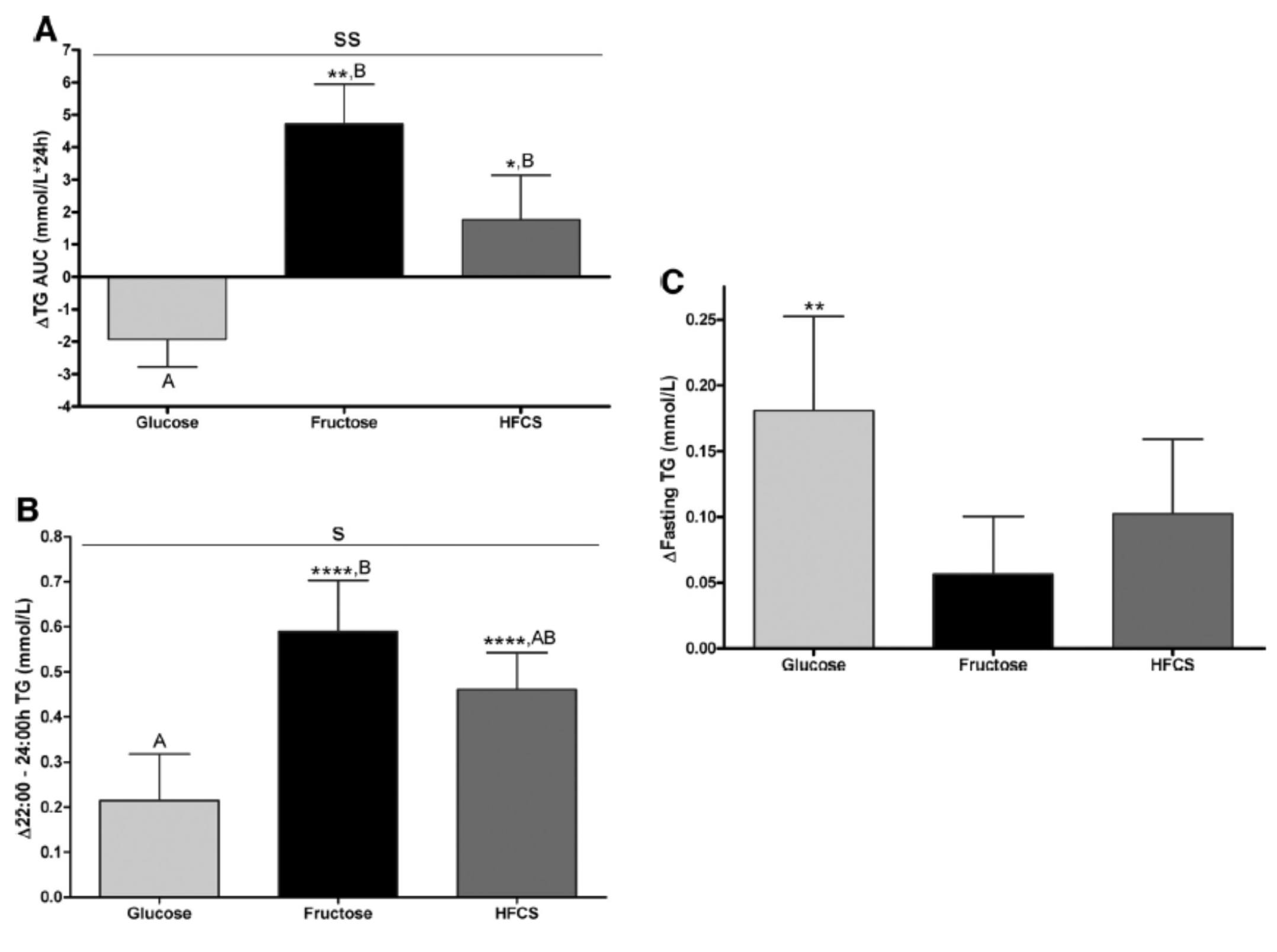
The differences were striking. The group that had all fructose and HFCS removed from their diet, despite still ingesting 55% of their total intake in the form of non-sugar carbohydrates, experienced a decline in total TG (Figure A, which represents the daily integral of plasma TG levels, or AUC). However, that same group experienced the greatest increase in fasting TG levels (Figure C). Post-prandial TG levels were elevated in all groups, but significantly higher in the fructose and HFCS groups (Figure B). The question this begs, of course, is which of these measurements is most predictive of risk?
Historically, fasting levels of TG are used as the basis of risk profiling (Figure C), and according to this metric glucose consumption appears even worse than fructose or HFCS. However, recent evidence suggests that post-prandial levels of TG (Figure B) are a more accurate way to assess atherosclerotic risk, as seen here, here, and here. One question I have is why did the AUC calculations in Figure A show a reduction in plasma TG level for the glucose group?
The figure below summarizes the differences in LDL-C, non-HDL-C, apoB, and apoB/apoA-I.
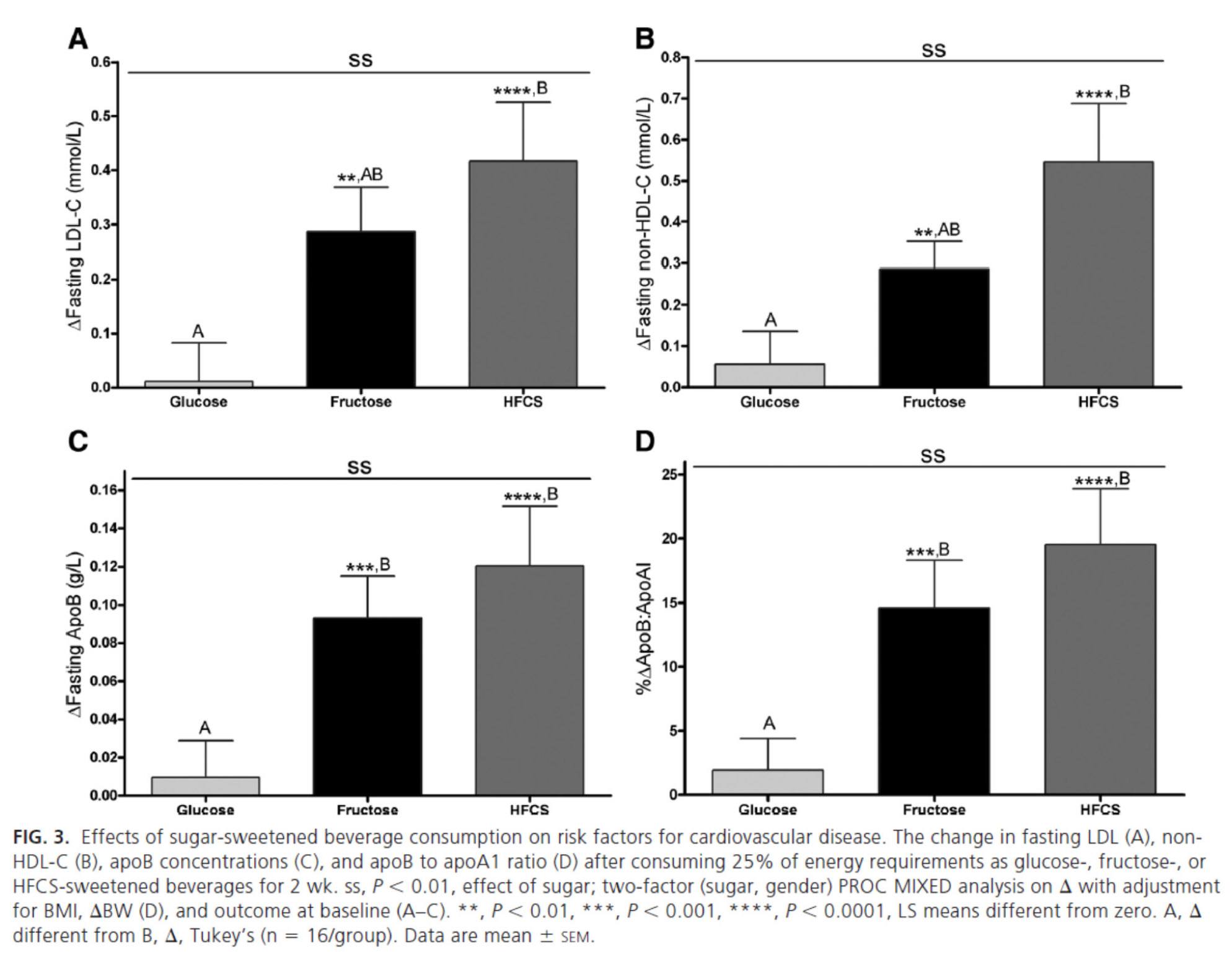
Again, the results were unmistakable with respect to the impact of fructose and HFCS on lipoproteins, and by extension, the relative lack of harm brought on by glucose in isolation. [Of course, removal of glucose and fructose/HFCS would have been a very interesting control group.]
One of the simultaneous strengths and weaknesses of this study was the heterogeneity of its subjects, who ranged in BMI from 18 to 35, in age from18 to 40, and in gender. While this provided at least one interesting example of age-related differences in carbohydrate metabolism (older subjects had a greater increase in triglycerides in response to glucose than younger subjects), it may have actually diluted the results. There were also significant differences between genders in the glucose group.
What was most interesting about this study was the clear difference between the 3 groups that was not solely a function of fructose load. In other words, the best outcome from a disease risk standpoint was in the glucose group, while the worst outcome was not in the all-fructose group, but in the 50/50 (technically 55/45) mixed group. This is a very powerful indication that while glucose and fructose alone can be deleterious in excess, their combination seems synergistically bad.
The role of saturated fat in cardiovascular disease
In the next week or two I’ll be posting an hour-long comprehensive lecture I gave at UCSD a few weeks ago on this exact topic. Rather than repeat any of it here, I’ll highlight one study that I did not include in that lecture. The study, Effect of a high saturated fat and no-starch diet on serum lipid subfractions in patients with documented atherosclerotic cardiovascular disease, published in 2003, treated 23 obese patients (average BMI 39) with known cardiovascular disease (status post coronary artery bypass surgery and/or stent placement) with a high-fat ketogenic diet. Because the study was free-living and relied on self-reporting, not all subjects had documented levels of elevated serum B-OHB. However, the subjects were instructed to avoid starch and consume 50% of their caloric intake via saturated fat, primarily in the form of red meat and cheese. There were no restrictions on fruits and vegetables, which may have accounted for the observation that not all subjects were ketotic during the 6-week intervention. In total, only 5 of the 23 patients achieved documented ketosis.
All of the subjects were on statins and entered the study at a goal LDL-C level target of 100 mg/dL, which may have been the only way the authors could get the IRB to approve such a study.
The table below shows the changes in lipoprotein fractions following the intervention (there was no control group):

This study was conducted during the height of the “outcry” over the Atkins diet. While most doctors reluctantly agreed that Dr. Atkins’ diet could reduce body fat, most believed it was still very dangerous. In the words of Dean Ornish, “Sure you can lose weight on a low-carb diet, but you can also lose weight on heroin and no one would recommend that!”
Fair point. In fact, the authors of this study acknowledged that they “strongly expected” this dietary intervention to increase risk for cardiovascular disease, which is why they only included subjects on statins with low LDL-C. However, as you can see from the table above, the authors were startled by the results. The subjects experienced a significant reduction in plasma triglycerides and VLDL triglycerides, without an increase in LDL-C or LDL-P. In fact, LDL size and HDL size increased and VLDL size decreased – all signs of improved insulin resistance. Furthermore, fasting glucose and insulin levels also decreased significantly. The mean HOMA-IR was reduced from 5.6 to 3.6 (normal is 1.0) and TG/HDL-C from 3.3 to 2.0 (normal is considered below 3, but “ideal” is probably below 1.0) in just 6 weeks. Taken together, these changes, combined with the dramatic change in VLDL size, suggest insulin resistance was dramatically improved while consuming a diet of 50% saturated fat!
As all of these patients were taking statins, we’re really robbed of seeing the impact of this diet on LDL-P, which did not change. Also, CRP levels rose (though not clinically or statistically significantly).
Putting it all together
It is very difficult to make the case that when carbohydrates in general, and sugars in particular, are removed or greatly reduced in the diet, insulin resistance is not improved, even in the presence of high amounts of saturated fats. When insulin resistance improves (i.e., as we become more insulin sensitive), we are less likely to have the signs and symptoms of metabolic syndrome. As we meet fewer criteria of metabolic syndrome, our risk of not only heart disease, but also stroke, cancer, diabetes, and Alzheimer’s disease goes down.
Furthermore, as this study on the Framingham cohort showed us, the more criteria you have along the spectrum of metabolic syndrome, the more difficult it becomes to predict your risk, due to a widening gap in discordant risk markers, as shown in this figure.
As I noted at the outset, the “dream” trial has not yet been done, though we (NuSI) plan to change that. Until then each of us has to make a decision several times every day about what we will and won’t put in our mouths. Much of this blog is dedicated to underscoring the impact of carbohydrate reduction on insulin resistance and metabolic syndrome.
The results of the trials to date, combined with a nuanced understanding of the lipoprotein physiology and their role on the atherosclerotic disease process, bring us to the following conclusions:
- The consumption of sugar (sucrose, high fructose corn syrup) increases plasma levels of triglycerides, VLDL and apoB, and reduces plasma levels of HDL-C and apoA-I.
- The removal of sugar reverses each of these.
- The consumption of fructose alone, though likely in dose-dependent fashion, has a similar, though perhaps less harmful, impact as that of fructose and glucose combined (i.e., sugar).
- The addition of fat, in the absence of sugar and starch, does not raise serum triglycerides or other biomarkers of cardiovascular disease.
- The higher the level of serum triglycerides, the greater the likelihood of discordance between LDL-C and LDL-P (and apoB).
- The greater the number (from 0 to 5) of inclusion criteria for metabolic syndrome, the greater the likelihood of discordance between LDL-C and LDL-P (and apoB).
I would like to address one additional topic in this series before wrapping it up – the role of pharmacologic intervention in the treatment and prevention of atherosclerotic disease, so please hold off on questions pertaining to this topic for now.


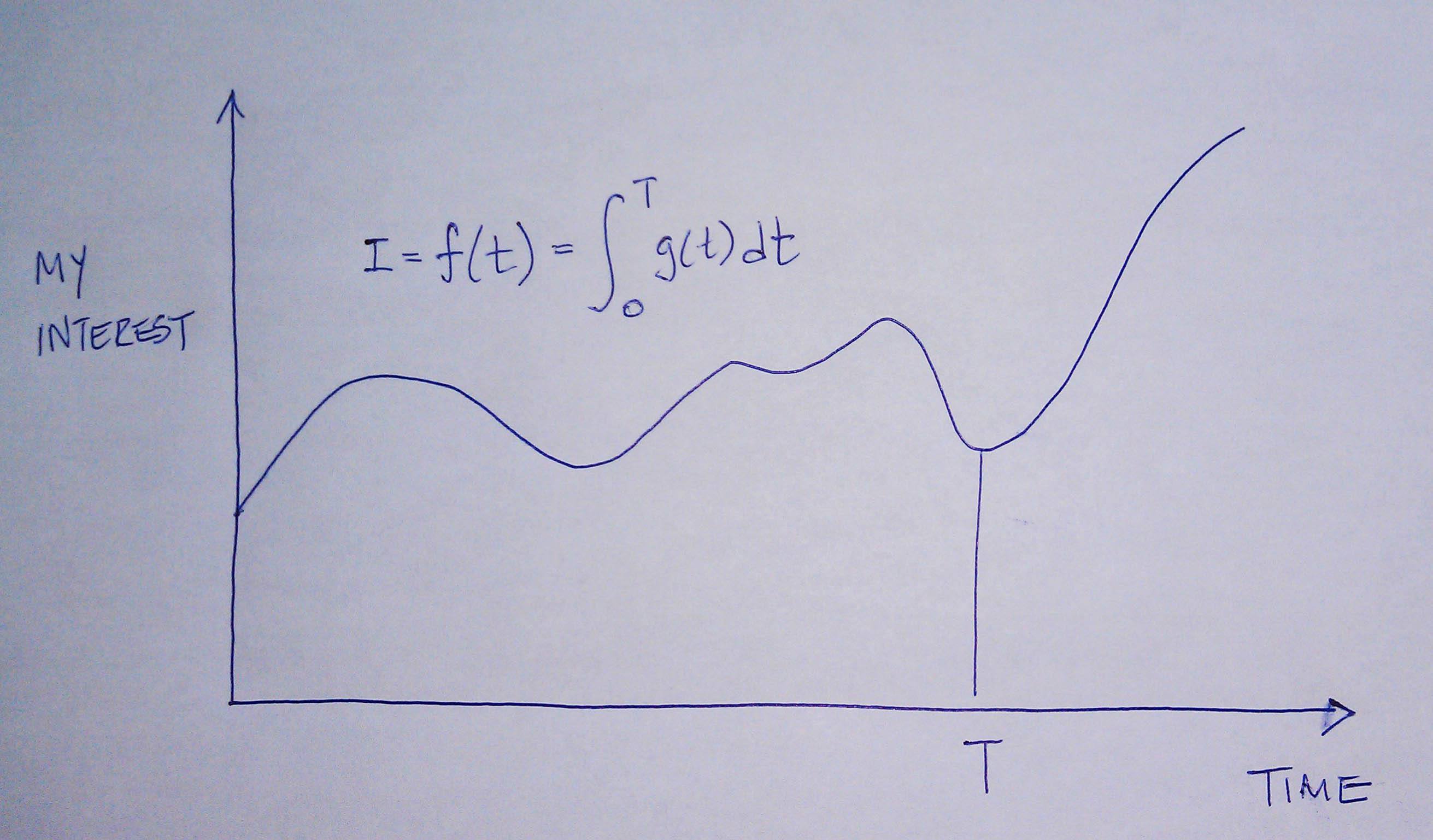
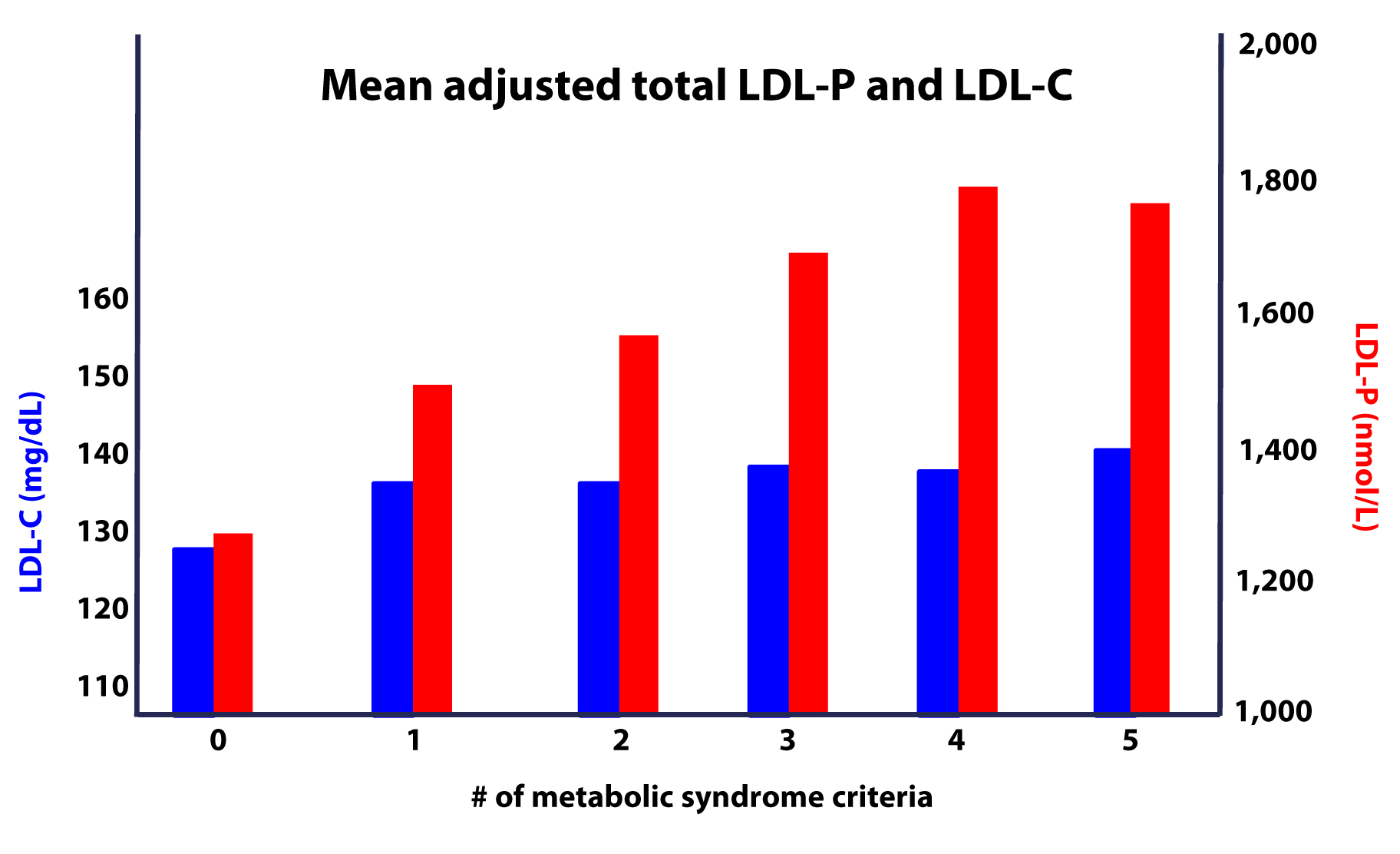
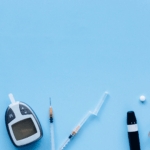
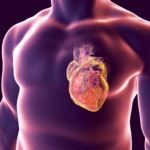
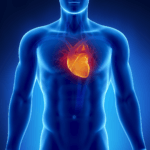

It sounded absurd to me, and goes against everything I now understand. I seem to need constant reassurance for some reason.
Thanks,
Gerry
Don’t worry, Gerry, we’ll get you confident enough to resolve this on your own and explain it others.
The NMR LipoProfile is also available from LabCorp, according to theparticletest.com site. There are many locations, even though there’s only one LipoScience. This could be an alternative for many folks.
As long as they send to LipoScience to do the actual NMR.
Labcorp does send the blood work to LipoScience to do the NMR. I use privatemdlabs.com for my blood work and this is what their site says:
“*Please note, the NMR LipoProfile® is processed through LipoScience, the cardiac c-reactive protein and Lp(a) is processed through Labcorp, results are provided on a Labcorp Report.”
I’ve just had head and neck MRAs and CTIs done as follow up to a MRA of the head showing extreme narrowing of the left Middle Cerebral Artery. The CTI showed reconstitution of the arterial bed distal to the narrowing of the MCA. However, the same CTI also showed extreme narrowing of one Vertebral Artery and moderate narrowing of the other. A neck MRA follow up confirmed that finding. My Neurologist was not familiar with NMR lipid panels and ordered your standard panel. LDLs were 151, Total C was 222, Trigs were 65, HDLs were 58, VLDLs were 13. I’m worried about further arterial narrowing, naturally. I’m taking Plavix and Lipitor (20mg) daily and have been following Dr. Furhman’s Eat to Live regimen, eliminating oils, dairy and saturated animal fats while eating complex carbs (beans and greens with fruit to boot). After reading your fine article I’m going to ask my PCP to order an NMR panel to get an LDL-P measure as a baseline in anticipation of an October consult with the Neurologist, at which time another NMR lipid panel will be ordered. Since Radiological studies have shown stenosis in the Vertebral Arteries, I feel I’ve left the realm of interpretation of lipid measures and have direct evidence of “the thing itself”. The question I have is, what should I eat to arrest and hopefully regress the stenosis? Evidence-based responses would be helpful in presenting my case for whatever diet I need to be on to my Neurologist. Thanks in advance.
Ted, I think you’ll find all of the evidence-based responses on this blog. It’s certainly possible that the plant-based diet you’re consuming is preventing greater acceleration of your disease, but it’s likely due the amount I suspect you’ve cut down on sugar and starch, rather the reduction in oil, meat, and saturated fat. Watch the video in this post: https://eatingacademy.com/nutrition/how-did-we-come-to-believe-saturated-fat-and-cholesterol-are-bad-for-us
Just got my NMR Lipoprofile back. Background: Been eating Dr. Fuhrman’s plant-based diet for 5 weeks. Had been an omnivore of the Paleo/Primal ilk (Devaney, Sisson, Enig, Drs. William Davis, Kurt Harris, etc.) for years prior to getting a neck MRa in July that showed severe stenosis in both verterbral arteries. Hence the change in diet. Not picking a fight; just saying that I had to change something given the stenosis that was imaged. Since July 13th I’ve dropped 15-20 pounds. I’m 6 foot, 170lbs, with no abdominal fat at the moment. Take 20mg of Lipitor generic, 75mg of Plavix, 100mg of CoQ10 and a moderate amount of B12 daily. Here are the numbers: July 13th/August 21st – Total C 222/118, Trigs 65/76, LDL-C 151/64, HDL-C 58/39. CRP May 4th 2012/August 21st: 1.7/0.47. LDL-P and small LDL-P were not measured on July 13th. The last they were measured was March 2, 2011 via NMR. Here’s the comparison: March ’11/August ’12: LDL-P 2384/732. small LDL-P 558/442. Fantastic news!! But why is it that my neurologist, with whom I shared these numbers said, “Regarding the LDL-P, there have so far been no conclusive evidence based studies to evaluate the optimal value and the best management of this value for stroke prevention. Therefore, current stroke guidelines still recommend looking at LDL.” Are there any studies that you know of that I could show her that give peer-reviewed support to the use of LDL-P values in managing stroke prevention? I’m very happy with the latest NMR results, naturally, and am hoping that the Radiology studies at the end of this year will show plaque regression (or at least non-progression) associated with the very low LDL-P number (732) that you’ve indicated in the article above: (“If you want to stop atherosclerosis, you must lower the LDL particle number. Period.”) as well as the low Total C and LDL numbers that are crucial to stopping the development of atherosclerosis/plaque progression. I’ll keep you posted but am interested to hear from you what you make of my NMR results. Thanks for your great site and the way you keep up with the correspondence. Don’t know how you do it, but sure glad you do.
Peter,
Ted’s n of 1 study is very interesting. I am quite sympathetic to his plight, and am impressed by how disciplined his dietary interventions seem to have been.
Despite great efforts, I have failed to find any publication of the results of any randomized controlled trial comparing a very low carbohydrate diet with a very low fat (Ornish) diet that includes the lipoprotein analyses that you have explained,, or even VLCD with a vegan Atkins type diet.
Have you found such a study? Would NUSI be supporting such a study? The one of greatest utility in the short run would be one comparable to Gardner’s 2007 study that was set up to compare results based on little more than sending each study group out with the instructions of the Atkins, Ornish, LEARN, and Zone books. Perhaps analyzing the data by stratifying the groups into the four concordant vs disconcordant patterns of lipoproteins would yield useful results to physicians and the millions of IR individuals who stumble on the results. Perhaps a relatively inexpensive study could be done on the blood samples already collected for Gardner’s study? Have you spoken with him about this?
Thank you very much for all your work.
Jane
You’re correct. This is, indeed, in the works.
Thanks for the thoughtful response, Peter. I’m a 57 year old guy who one year ago had an NMR lipid panel which showed an LDL particle number slightly over 2000. At the time I was eating red meat, lean meat, fish, butter, half and half, etc. I continued thusly until this May when, quite by accident, I learned of the stenosis in my vertebral arteries. I’ve only recently (July 12th to be exact) eliminated dairy, saturated fats and most oils from my diet, grudgingly. I had already minimized if not eliminated processed grains and cheap carbs from my diet these past several years. I’ve chosen the Eat to Live plan with some modifications because, frankly, I’ve done the low-carb, high protein and fat diet without the grains and my LDL particle number was astronomical. I appreciate that you say that it’s possible that the new (since July of this year) plant-based diet may be slowing the acceleration of the stenosis. I hope to arrest and regress it! Thanks for your time and I’ll let you know how things are going in a couple of months.
A short article in the recent Scientific American titled “Cholesterol Confusion” referred to a paper in the April “Journal of the American Heart Association” that concluded that HDL particles with apolipoprotein C-III ‘may nearly double the risk of heart disease in healthy men and women” while HDL particles without apoC-III may be especially heart protective. As one commentator on the study said, “…there’s a lot more to be learned about HDL and how it acts”
I only hope that NuSi will not be overloaded with questions ‘where there is a lot more to be learned’.
After reading your guest post on Marks Daily Apple, the question arose in my mind about cumulative effects of arterial plaques and long term repairability. I got the impression from your desription of an arterial plaque that it’s likely there to stay once in place. Is there any data on how repairable the damage might be?
Turns out the plaques can regress, through either pharmacological intervention and/or lifestyle modification (e.g., smoking cessation, dietary change).
Hi there Peter,
I was wondering when Part X will be released? Or has it been already?
Thanks!
It’s still in my head…not sure when it will be released, but probably not for another few weeks, and certainly not before NuSI’s launch.
I’m sure you’ve been bombarded with the news about the failed* calorie restriction study:
https://www.nytimes.com/2012/08/30/science/low-calorie-diet-doesnt-prolong-life-study-of-monkeys-finds.html
“Rafael de Cabo, lead author of the diet study, published online on Wednesday in the journal Nature, said he was surprised and disappointed that the underfed monkeys did not live longer. ”
Disappointed? I understand that they were expecting a different result, but I’m anything but disappointed! Who wants to have to choose between a somewhat longer lifespan of semi-starvation and a normal lifespan of not starving? I’ll be thrilled to death if this idea ends up on the rubbish heap of disproved hypotheses. As someone said in another story about CR:
“They say you can live longer doing this, but after a few days of it, you won’t want to.”
*Failed, adj Not validating the wishful thinking of the researchers.
Yes, I was also a bit surprised by that sentence when I read this article. Thanks for sharing with everyone.
I’m new to your blog and just finished reading the cholesterol series. This is an excellent resource, thanks for putting this together. This is of particular interest to me given I’m 36 and presumably have familial hypercholesterolemia (heterozygote). I have had a long, drawn out internal debate/rationing process regarding statin use given this is my only risk factor for heart disease. I’m particularly interested in the upcoming “role of pharmacologic intervention in the treatment and prevention of atherosclerotic disease” referenced above. Any time-table for releasing this blot post?
Nathan, glad you’re enjoying it. That installment is probably at least a month away. With NuSI’s launch just a week away, and 12 other things up the air, I won’t be able to address this properly for a while.
Peter,
Direct Labs has their NMR Lipo Profile lab test on sale this month if anyone is interested. I don’t work for them!
As an individual with heterozygous familial hypercholesterolemia who has switched from a Dean Ornish diet to a Paleo approach and tripled my HDL-C, I still find the LDL-P datasets enigmatic. While I may have LDL-P of 2800 (top 0.1%), I in no way resemble my cohort-mates in any other blood measures since I have very low TGs, low CRP, low VLDL, very high HDL-C, and 90% large LDL. I am an outlier. Must my cardiovascular future be correlated with my “peers?”
It’s a great question, Jonathan. We just don’t know the answer, even in the absence of your FH. We need more clinical trials to understand what high LDL-P in the absence of other markers means for someone eating like you.
On Inflammation !
This paper is on Vitamin D and erectile dysfunction .
However it has a wider aspect than that. Covering some of the Vitamin D and cardiovascular disease mechanisms. Esp Inflammation .
https://www.ncbi.nlm.nih.gov/pmc/articles/PMC3427191/?tool=pubmed
“Vitamin D may promote vascular health by inhibiting inflammation. Vitamin D supplements and injections may lower CRP levels as much as 40% and improve cytokine profiles; it inhibits the production of proinflammatory cytokines while stimulating the production of anti-inflammatory cytokines. One pro-inflammatory cytokine, TNF?, is inversely related to regular exposure to sunlight and artificial sources of UVB among women, and the same is probably true for men. Two CAMs induced by TNF? are also significantly decreased after incubation with activated vitamin D.1 In addition, Oh and colleagues have shown that in patients with type 2 diabetes, active vitamin D inhibits foam cell formation and suppresses macrophage cholesterol uptake, inhibiting the inflammatory atherosclerotic process described earlier.
We hypothesize that vitamin D optimization through sunlight exposure or vitamin D3 supplementation would decrease vascular damage caused by inflammation and reduce the risk of ED. We searched pubmed.gov for evidence contradicting our hypothesis regarding VDD and ED but found none.”
Would seem to be important not to be Vitamin D deficient.
==>
“Understanding the Entire Lipid profile
Thomas Dayspring MD, FACP
There is only one absolute in atherosclerosis: sterols (predominantly cholesterol) entering the
artery wall and being internalized by macrophages, creating foam cells (the histologic diagnostic
marker of atherosclerosis) and the associated inflammatory process. ”
There are also papers that connect Vitamin D to Increase in HDL…
In my circle this has been the case.
Peter – Beta – Amyloid deposits and heart disease ? I had not heard of that before.
I found this interesting . It also made me think about the reports linking insulin to faulty Amyloid clearance in the brain–
Eg “Elevated insulin levels are implicated in the brain cells’ failure to clear beta-amyloid. ” Maybe not just the brain ? Maybe all the Blood Vessels too.
In any case more on Vitamin D and inflammation ..
https://www.bbsrc.ac.uk/news/health/2012/120116-pr-vit-d-combat-ageing-in-eyes.aspx
“The researchers identified two changes taking place in the eyes of the mice that they think accounted for this improvement. Firstly, the number of potentially damaging cells, called macrophages, were reduced considerably in the eyes of the mice given vitamin D. Macrophages are an important component of our immune systems where they work to fight off infections. However in combating threats to the aged body they can sometimes bring about damage and inflammation. Giving mice vitamin D not only led to reduced numbers of macrophages in the eye, but also triggered the remaining macrophages to change to a different configuration. Rather than damaging the eye the researchers think that in their new configuration macrophages actively worked to reduce inflammation and clear up debris.
The second change the researchers saw in the eyes of mice given vitamin D was a reduction in deposits of a toxic molecule called amyloid beta that accumulates with age. Inflammation and the accumulation of amyloid beta are known to contribute, in humans, to an increased risk of age-related macular degeneration (AMD), the largest cause of blindness in people over 50 in the developed world. The researchers think that, based on their findings in mice, giving vitamin D supplements to people who are at risk of AMD might be a simple way of helping to prevent the disease.
Professor Jeffery said “When we gave older mice the vitamin D we found that deposits of amyloid beta were reduced in their eyes and the mice showed an associated improvement of vision. People might have heard of amyloid beta as being linked to Alzheimer’s disease and new evidence suggests that vitamin D could have a role in reducing its build up in the brain. So, when we saw this effect in the eyes as well, we immediately wondered where else these deposits might be being reduced.”
Professor Jeffery and his team then went on to study some of the blood vessels of their mice. They found that the mice that had been given the vitamin D supplement also had significantly less amyloid beta built up in their blood vessels, including in the aorta.
Professor Jeffery continues “Finding that amyloid deposits were reduced in the blood vessels of mice that had been given vitamin D supplements suggests that vitamin D could be useful in helping to prevent a range of age-related health problems, from deteriorating vision to heart disease.”
Jonathan, I read this on the site Paleo Premise (link: https://thepaleopremise.blogspot.com.au/)
“The number of LDL particles (LDL-P) can be estimated by apolipoprotein B (ApoB) and lipoprotein A (Lp(a)). The size of the LDL particle is no longer a significant risk factor when adjusted for ApoB, ApoB is no longer a significant risk factor after adjusting for HDL-C and triglycerides and LDL-C is no longer a significant risk factor after adjusting for systolic blood pressure and smoking” from his analysis of the EPIC study. So if what he calculated jibes with what Dr. Attia is saying (the part about size of LDL not being important) and the following statement is correct, it would show that those with high ApoB levels (which correlate with LDL-P, right, or at least help estimate it) can be healthy if your HDL-C is high and your trigs are low. Is this correct?
I haven’t seen any advice on lowering LDL (C or P). Perhaps the next post?
I was on a statin for years but went off – I don’t know if statins long term are healthy, either. I don’t know LDL-P but as of last week had LDL-C of 150, HDL-C of 64 and TG <50.
No clue about Apo B.
If Apo B is low, would I expect LDL-P to be low or must they both be assessed? If Apo B is low and LDL-P is moderate / high would I still need to focus on lowering LDL-P. In thinking about what you've written, I would think it very odd to have discordance between ApoB and LDL-P.
Thoughts?
I would agree with conclusion that it would be very odd to have discordance between ApoB and your LDL-P. Seeing as your TG/HDL ratio is .78, which is phenomenal, I would venture to guess that you would likely find that you also have a low LDL-P. The TG/HDL ratio is a quick check as to whether you may want to proceed with further analysis via an ApoB and LDL-P test. I would then further venture to guess that there is likely not much discordance between a sub 1.00 TG/HDL ratio and low ApoB/LDL-P. Also, as has been pointed out here and other places, I would not focus on lowering your LDL-C. Further, you should not be surprised to see it in fact rise on a HFLC diet….as Dr. Attia and others have pointed out. As we know, however, you do see alot of discordance between a high LDL-C and ApoB/LDL-P.
Hi Peter,
I’ve come across the concept of post-prandial dysmetabolism where after a fatty meal is ingested, there are large amounts of chyloromicrons in the blood. This can then be deposited or cause an MI. But also read that such a thing may only occur in the presence of high glucose.
Will you be blogging on this, and is this phenomenon a serious consequence?
Probably not in the near term.
So the phenomenon doesn’t really apply to the ketogenic diet?
“One question I have is why did the AUC calculations in Figure A show a reduction in plasma TG level for the glucose group?”
Easy answer I think, glucose stimulates insulin release hence incresaed activity of lipoprotein lipase therefore decreased TAGs. Fructose doesn’t stimulate insulin release.
Hi Peter et al,
I love it when doctors experiment on themselves! I just read this article:
https://azsunfm.blogspot.com/2012/09/font-definitions-font-face-font-family.html (Does LDL-P Matter?)
And my take away was this: Dr. Rakesh Patel switched from a SAD diet to a Low-Carb diet, his Lipid Numbers got worse but his actual artery thickness number (CIMT) got smaller and his CT score is 0… besides the fact that this is super cool, I didn’t know one’s coronary artery disease could “improve”. Here, in Peter’s post it says CAD can only be delayed, which, for me, translated to “whatever you have now can’t get better, you can only slow down the progression”.
Do you see my confusion? Can you ‘heal” CDA with a low-carb diet and how does that translate to “you’re going to get it anyway eventually”?
Thanks for any response!
Diana
Yes, Dr. Patel was kind enough to share this post with me a few weeks ago. I was very happy to see this. Here’s what it tells me: we need new trials to evaluate the predictive power of biomarkers in the absence of (most) carbohydrates in the diet.
Hey Peter so are you familiar much with Anthony Colpo’s stance on cholesterol? I haven’t read his book “The Great Cholesterol Con”, but from some of his articles on his website, I get the impression he believes LDL has nothing to do with CVD and that its complete nonsense. Since it seems there is a strong correlation between LDL particle count and CVD, would you say he’s completely wrong on this or is it possible he’s right and that even LDL-P isn’t a causal factor?
I have no idea what he thinks/believes.
I’ve just completed a compare-contrast (A-B) study on myself involving manipulation of diet and statins to determine the effect either might have on my LDL-P. My diet was essentially Vegan. My statin was 20mg of atorvastatin. My LDL-P on the statin + vegan diet as determined by NMR was 732 on August 21st. I went off atorvastatin for 5 weeks and then had another NMR done on September 28th. My LDL-P had skyrocketed to 1659! In fact, LDL-C rose from 64 to 147 (so I’m concordant, I gather…), TC went from 118 to 210 and Trigs went from 79 to 90! My weight dropped from 187 to 163. I’m very lean now, which is one good thing that’s come of a Vegan diet. Before proceeding, though, I should note that it’s possible I have hyperlipidemia and/or hypercholesterolemia. Why do I think so? I have about 4 xanthomas, subcutaneous fatty nodes, on my arms and legs and these are considered suggestive of being hyperlipidemic. Also, about a year and 3/4s ago I had an LDL-P reading of 2384 without being on statins and eating a moderately low-carb diet. The biggest issue facing me these days is that I have stenosis in both vertebral arteries. I’m back on statins as of yesterday! I can’t be having elevated LDL-P with stenosis in both of those arteries!! I’m thinking of going low-carb, high fat while continuing with atorvastatin. Any comments from Peter or other readers would be appreciated.
Ted,
Clarifying question:
Weren’t you on Paleo without statin before switching to Vegan plus statin? big improvement
So now you’ve done an ABC study, with C being the Vegan diet without the statin? back to high LDL-P
And now you are proposing a Paleo plus statin trial? (or an Attia/Taubes plus statin trial?)
Please do let us know the results of your self study,; at least it will be another case study supporting a diet treatment.
Without good randomized studies on these interventions that have external validity, it seems all we can do to minimize our risk or attempt to reverse the disease process is to experiment on ourselves.
Thank you for sharing your results.
Jane
Dr. Attia,
I’m curious if you have any advice on questions that patients should ask when interviewing prospective doctors for the purpose of primary prevention of cardiovascular disease. Also, do you feel that cardiologists are best suited for this role, typically, or other specialists such as endocrinologists?
It’s difficult to choose a doctor for many of us, so your input on this matter would be greatly appreciated.
Thanks.
This is a great question. I’d start with an open discussion of their philosophy of the role of nutrition in human health. Are they wed to the food pyramid and conventional wisdom (fat is bad, grains are good)? As to what kind of doctor, it depends on the problem you’re trying to address. A good family doctor or internist should be the “quarterback” of your healthcare, with specialists being brought in for specific issues (e.g., lipid-related, hormone-related).
Great blog. Where is part X???
In my head at the moment, but I’m hoping to get it out in the next 4-6 weeks.
You may find his peer-reviewed paper here interesting if you have some spare time.
https://www.jpands.org/vol10no3/colpo.pdf
What is “spare” time? Sounds like an interesting, albeit theoretical, concept.